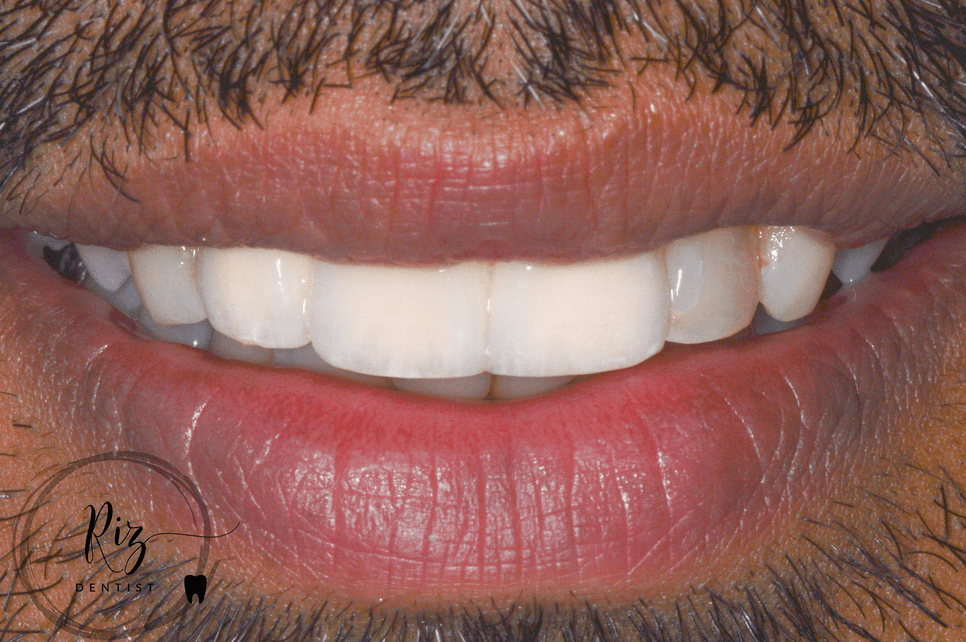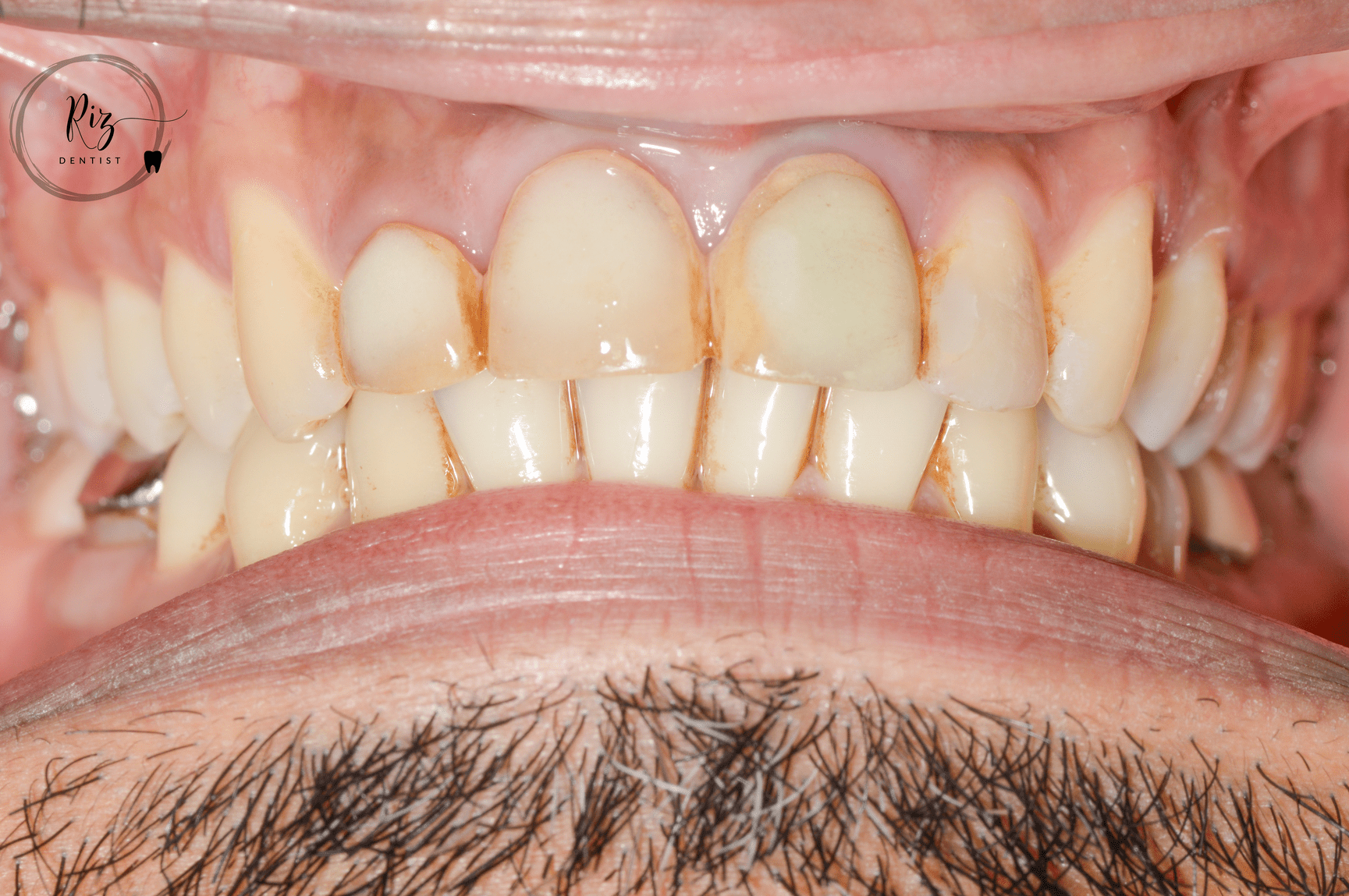Extraction to Restore 3 Front Teeth!!
Patient's Initial Concern:
The patient's three upper front teeth were deemed irreparable, likely due to multiple previous root canal treatments and compromised posts and was advised extraction and implants previously.
Treatment Considerations:
The patient's young age was a significant factor in treatment decision-making.
Rather than immediately opting for extraction, a decision was made to attempt to save the teeth, which was a conservative approach to preserve natural dentition. As even implants have a lifetime of service and we want to delay embarking on that journey for as long as we can.
Treatment Process:
Provisional Restorations: Long-term provisional restorations were placed on the three compromised teeth. These provisional restorations served to monitor the stability of the teeth over time.
Stability Monitoring: The patient's condition was closely monitored, and the provisional restorations were assessed to ensure that the teeth remained stable and functional for 6 months.
Final Restoration: Once it was confirmed that the teeth could be saved, they were restored with linked crowns and a bridge. This approach likely helped stabilize the patient's bite and ensured the longevity of the treatment.
Temporary Cement: The crowns were affixed with temporary cement. This was done to make it easier to retrieve the restorations in case any of the teeth beneath them required further attention in the future , an date remaining structure can be hopefully reused as a bridge to replace the lost tooth.
Outcome:
The treatment remained stable, and the patient, referred to as "X," was described as being "exceedingly pleased" with the results.
The patient appreciated the dental team's efforts to preserve their teeth, even if it was for a limited period, recognizing the value of saving their natural dentition.
This case reflects a conservative and patient-centered approach to dental care, emphasizing the importance of preserving natural teeth when feasible, particularly in young individuals. The temporary cement used for the crowns allowed for flexibility in case of future dental needs.
Lab Credit
Patient's Initial Concern:
The patient's three upper front teeth were deemed irreparable, likely due to multiple previous root canal treatments and compromised posts and was advised extraction and implants previously.
Treatment Considerations:
The patient's young age was a significant factor in treatment decision-making.
Rather than immediately opting for extraction, a decision was made to attempt to save the teeth, which was a conservative approach to preserve natural dentition. As even implants have a lifetime of service and we want to delay embarking on that journey for as long as we can.
Treatment Process:
Provisional Restorations: Long-term provisional restorations were placed on the three compromised teeth. These provisional restorations served to monitor the stability of the teeth over time.
Stability Monitoring: The patient's condition was closely monitored, and the provisional restorations were assessed to ensure that the teeth remained stable and functional for 6 months.
Final Restoration: Once it was confirmed that the teeth could be saved, they were restored with linked crowns and a bridge. This approach likely helped stabilize the patient's bite and ensured the longevity of the treatment.
Temporary Cement: The crowns were affixed with temporary cement. This was done to make it easier to retrieve the restorations in case any of the teeth beneath them required further attention in the future , an date remaining structure can be hopefully reused as a bridge to replace the lost tooth.
Outcome:
The treatment remained stable, and the patient, referred to as "X," was described as being "exceedingly pleased" with the results.
The patient appreciated the dental team's efforts to preserve their teeth, even if it was for a limited period, recognizing the value of saving their natural dentition.
This case reflects a conservative and patient-centered approach to dental care, emphasizing the importance of preserving natural teeth when feasible, particularly in young individuals. The temporary cement used for the crowns allowed for flexibility in case of future dental needs.
Lab Credit
Patient's Initial Concern:
The patient's three upper front teeth were deemed irreparable, likely due to multiple previous root canal treatments and compromised posts and was advised extraction and implants previously.
Treatment Considerations:
The patient's young age was a significant factor in treatment decision-making.
Rather than immediately opting for extraction, a decision was made to attempt to save the teeth, which was a conservative approach to preserve natural dentition. As even implants have a lifetime of service and we want to delay embarking on that journey for as long as we can.
Treatment Process:
Provisional Restorations: Long-term provisional restorations were placed on the three compromised teeth. These provisional restorations served to monitor the stability of the teeth over time.
Stability Monitoring: The patient's condition was closely monitored, and the provisional restorations were assessed to ensure that the teeth remained stable and functional for 6 months.
Final Restoration: Once it was confirmed that the teeth could be saved, they were restored with linked crowns and a bridge. This approach likely helped stabilize the patient's bite and ensured the longevity of the treatment.
Temporary Cement: The crowns were affixed with temporary cement. This was done to make it easier to retrieve the restorations in case any of the teeth beneath them required further attention in the future , an date remaining structure can be hopefully reused as a bridge to replace the lost tooth.
Outcome:
The treatment remained stable, and the patient, referred to as "X," was described as being "exceedingly pleased" with the results.
The patient appreciated the dental team's efforts to preserve their teeth, even if it was for a limited period, recognizing the value of saving their natural dentition.
This case reflects a conservative and patient-centered approach to dental care, emphasizing the importance of preserving natural teeth when feasible, particularly in young individuals. The temporary cement used for the crowns allowed for flexibility in case of future dental needs.
Lab Credit



